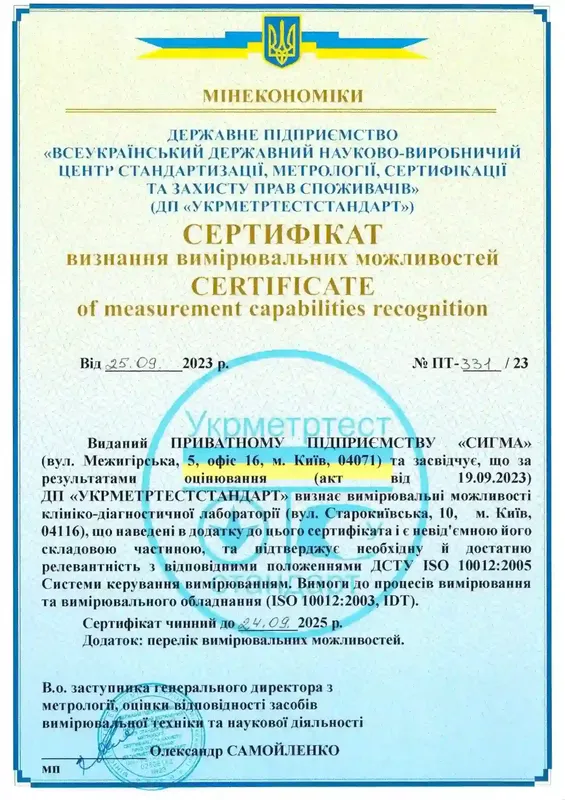
Treatment of pararectal fistulas in the Medical Center “Mediland” involves the use of the most modern techniques for the fast and painless recovery of our patients!
The pararectal fistula is a tubular passage that communicates the lumen of the rectum with the skin on the buttocks.
Fistulas cause serious discomfort for a person:
- because of the constant purulent discharge;
- frequent inflammations and suppurations;
- in extreme cases, can result in:
- rough changes in the rectal sphincter area;
- severe pain syndromes;
- violations of the muscular system of the rectum;
- and even to malignancy (transformation into cancer).
Important! The disease is not treated conservatively – effective treatment of a pararectal fistula without surgery is impossible.
For the treatment of pararectal fistula our specialists widely use laser welding of the fistulous course, its obliteration with special adhesives. Successfully apply the methods of eliminating the fistulous course without incisions of the rectal muscles (Operation LIFT, etc.).
Also, if necessary, for the treatment of pararectal fistula can be used all types of operations involving the excision of the fistulous course with the primary plastic of the sphincter muscles. Such operations are used in complicated forms of the disease, with fistulas that have a large number of branches and cavities along its course. At the same time, methods of radiowave surgery, electric welding of tissues, laser coagulation, etc. are actively used to treat pararectal fistula.
Individual approaches to the treatment of our patients allow, in most cases, to achieve full recovery in a short time with minimal discomfort and without loss of ability to work.

Laser coagulation of the fistula
The most modern method of treatment of pathology.
This technique involves cleansing the lumen of the fistula from the epithelium and pus with special tools, followed by the introduction into the lumen of the laser fiber in the direction from the skin to the lumen of the intestine. As the laser fiber is removed from the fistula, laser radiation is applied to its end, which gradually burns out the fistula, destroying all microorganisms in it.
Subsequently, due to the activation of the regenerative systems of the body, the fistulous duct grows with connective tissue fibers and heals with an elastic scar. To prevent recurrence, the internal opening of the fistula in the intestine may be sutured with a special suture.
Laser coagulation of the fistula is performed under conditions of regional anesthesia and is completely painless.
The use of a laser for the treatment of fistula does not imply a long stay of the patient in the hospital.
Duration of hospitalization is 2-3 days.
The patient’s ability to work is restored within 2 to 8 days after surgery.
Postoperative treatment involves only a mode of rest – “protective mode”, the use of rectal suppositories and ointments to speed up the regeneration processes.
The estimated cost of the operation is from 500 to 1000 euros, depending on the degree of complexity of the pathology.
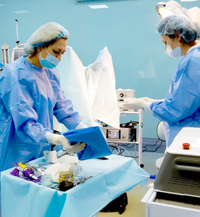
Operation LIFT (Ligation of Intersphincteric Fistula Tract)
This method involves elimination of the passage from the fistula to the rectum through a small skin incision between the fibers of the internal and external sphincters.
The fistula is dissected using microsurgical instruments, tied with a special thread at both ends and intersects. The wound is sutured with several stitches.
Recovery time takes from 7 to 10 days.
The duration of hospitalization is 3-4 days.
The course of the postoperative period is almost painless.
The cost of such an operation is 650 – 800 euros.
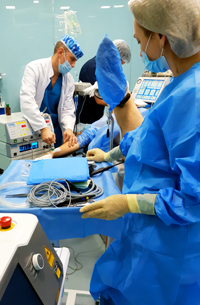
Excision of the fistula with obturation of its course
The point of the operation is to eliminate the fistulous tract throughout. In this case, the intersection of the sphincter muscles with their subsequent plastic surgery is not performed.
A special patching material is introduced into the defect in the muscle, after it has been treated with a laser (to kill the infection), over which the walls are sutured from the side of the intestine and the skin. The operation is less traumatic and allows you to achieve a radical cure for complex forms of the disease without the risk of scarring in the muscles.
The operation is performed under spinal or general anesthesia, completely painless.
The duration of hospitalization is 4 to 5 days.
The disability period is 14 – 18 days, which is connected with the need to take care of the seam line and the “protective regime”. The postoperative period is painless.
Estimated cost of such treatment is 450–650 euros.
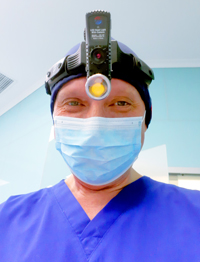
Excision of superficial fistula
The operation is applicable to the “superficial” located fistula.
During the intervention, the fistula is excised. In its place, a triangular wound is formed, leading from the rectum to the skin. Due to the surface location and use of lasers during surgery, such wounds are painless and heal quickly.
The operation is performed under spinal anesthesia, completely painless.
Duration of hospitalization is about 2 – 3 days.
The disability period is 14 days, which is associated with the need to care for a postoperative wound.
The estimated cost of such treatment costs 200-250 euros.

Excision of fistula with primary sphincter grafting
Previously, the traditional operation is used in our medical center only in cases when, due to the peculiarities of the fistula, the use of laser and other modern operations is impossible.
The essence of this operation is to eliminate the fistula along its entire length, with layer-by-layer suturing of the wound from the intestine and from the skin.
The operation is performed under spinal or general anesthesia, completely painless.
For analgesia in the postoperative period, the use of non-narcotic analgesics is sufficient (2-3 days in the form of tablets).
The duration of hospitalization is 3–7 days.
The disability period is 14–20 days, which depends on the depth of the fistula and is associated with the need to take care of the postoperative wound. The postoperative period is painless.
The estimated cost of such treatment costs 400-600 euros (depends on the shape, depth and degree of complexity of the fistula)/
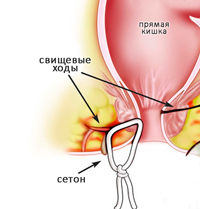
Seton
Even with the most complex fistulas, which have purulent cavities in their course, poorly drained and surrounded by inflamed tissues, we try to avoid the Excision of the fistula with primary sphincter plastic surgery. For that reason the treatment is divided into two stages:
At the first stage, the fistula is cleared of non-viable tissues, purulent cavities are opened, "leakages" and additional fistulous passages are eliminated, which do not communicate with the intestinal lumen. The main course introduces a special silicone drainage, which is tied in the form of a loop, one end of which goes out of the rectum, and the second through the external opening of the fistula.
The patient is discharged from the department with this drainage for 1.5-2 months. During this time, a rectilinear fistulous passage is formed around the drainage, delimited by fibrous tissue from surrounding tissues.
When the operation is repeated, this fistulous passage is reliably eliminated by the method of laser welding.
The term of hospitalization is 1-2 days.
The cost of the first stage of the operation with the installation of seton is from 250 to 400 euros.






